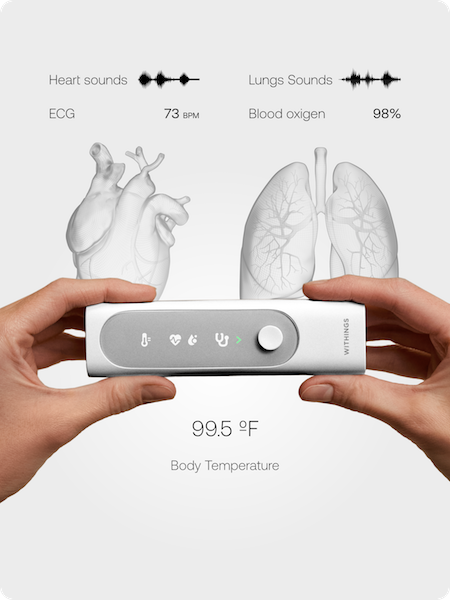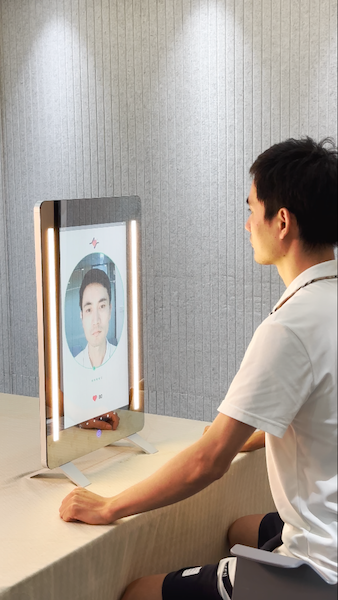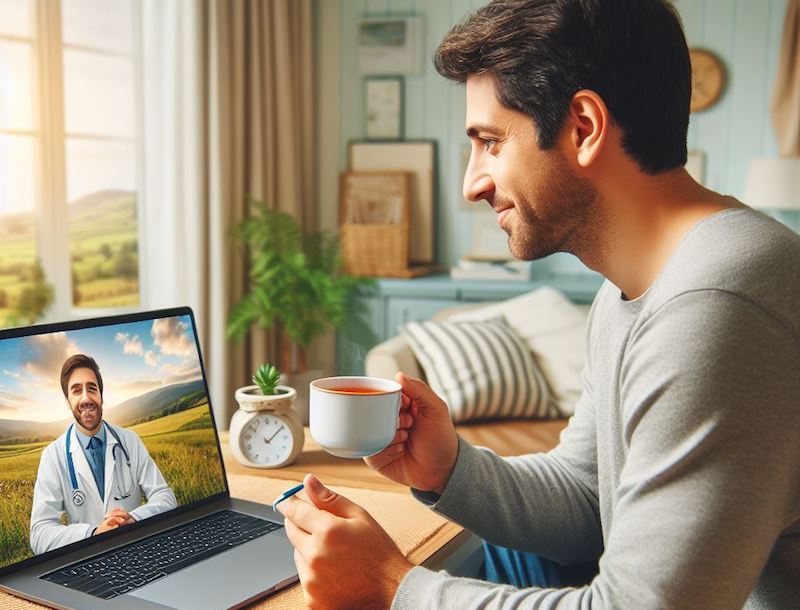Withings and NuraLogix offer telehealth diagnostics solutions at CES trade show in Las Vegas.
Smart home technology can do many things, including making a home more convenient to live in, providing added security, improving the energy efficiency of the home, and creating a healthy indoor environment. What smart home technology cannot do is to provide medical and diagnostic information to both the homeowners and the physicians that care for them and their family.
According to the U.S. Government Office of Health and Human Services website Telehealth.HHS.gov, telehealth “lets your health care provider care for you without an in-person office visit. Telehealth is done primarily online with internet access on your computer, tablet, or smartphone.”
Telehealth is becoming more and more popular because it has some significant advantages over an in-person doctor’s office visit. For instance, it provides health care wherever you are located. This can be especially important for people that may have difficulty traveling to a doctor’s office because they are elderly, have limited mobility, have children and would have to arrange for child care, live in a rural area, or because they need to see a specialist that is located far from their home.
Telehealth also cuts down on the time away from work and minimizes the chance of your passing an illness on to other people or the chance of you catching an illness that other people in the doctor’s office are suffering from. It also typically costs less than an in-person visit with a physician, and there are reduced out-of-pocket expenses for parking, gas, etc.
What a telehealth visit lacks, however, is the ability for a physician to perform diagnostics tests during the visit. Withings and NuraLogix have recognized this issue and have announced new products at the Consumer Electronics Show (CES) in Las Vegas to address this problem.
Withings BeamO
Withings is a French technology company specializing in the development and manufacturing of health technology products. It was founded in 2008 and has offices in the U.S., France, and Hong Kong. Its product line includes smart watches with health sensors, smart scales, blood pressure monitors, a sleep monitor, and even a non-contact thermometer.

Additionally, Withings integrates the data collected by their products with medical professionals so physicians can better manage their patient’s health. I’ve written several articles on Withings products, including the Withings ScanWatch and the Withings Body Cardio Smart Scale.
Typically, temperature is the only health scan regularly performed at home. The Withings Beamo fuses the capabilities of a thermometer, electrocardiogram, oximeter, and stethoscope to capture the core health vitals typically taken during a doctor visit. To make this possible, the BeamO includes an array of sensors.
- An optical sensor for Photoplethysmography (PPG) and electrodes along its sides allow BeamO to perform blood oxygenation (SpO2) and heart rate readings simultaneously while also conducting a medical-grade, 1-lead, electrocardiogram (ECG). A simple light grip of BeamO initiates measurements that can be viewed by users in real-time on its colored LED display.
- SpO2 is a measurement of how much oxygen is being carried in a person’s blood and is a crucial measurement of how well the lungs are working.
- An ECG is a measurement of the electrical activity of the heart. The one lead ECG used by Withings can help diagnose atrial fibrillation and accurately evaluate heart rate.
- BeamO conducts accurate and stable core body temperature readings with a noninvasive scan of the temporal artery using a second generation Withings temperature sensor that leverages a mono-element thermophile which narrows the focal area of an infrared beam for contactless measurements. This increases the sensitivity of the scan, making it more robust to changes in distance from the skin or movement.
- BeamO’s digital stethoscope captures chest or back acoustic sound waves through a Piezoelectric disc. With intuitive tutorials, users achieve precise heart and lung evaluations. Equipped with a USB-C jack, results can be heard through headphones and seamlessly transferred, stored, and shared in the app. During telehealth sessions, audio streaming enables physicians to guide device placement and focus on specific areas of interest.
All the above measurements can be accomplished in under a minute. BeamO will be able to alert users to possible fever and infection; detect possible cardiovascular issues, including atrial fibrillation (AfiB) (following FDA clearance), which is one of the most prevalent forms of arrhythmias (irregular heartbeat); and provide alerts if heart rates are abnormal
All data collected by the BeamO will automatically be synced with the Withings app through Wi-Fi, creating a comprehensive health record over time. Users will then be able to view their full history of health readings along with interpretations of their meanings and actionable advice. Family medical health history can also be uploaded and, when necessary, shared with physicians and other family members. It also allows multiple family members to create individual profiles to use and share Withings devices.
NuraLogix Anura MagicMirror
NuraLogix is a Canadian medical and artificial intelligence (AI) technology company. It was founded in 2015 and its patented technology, Transdermal Optical Imaging (TOI), uses a video camera to extract user’s facial blood patterns data, which is later sent to the cloud-based DeepAffex platform to calculate a host of vital signs and disease risk assessments. NuraLogix has offered this technology in the form of an SDK, which can be customized into branded smartphone apps that leverage the smart phone’s camera to capture facial images for analysis.

NuraLogix has announced their first hardware product, Anura MagicMirror, a 21-1/2” table-top smart mirror with a built-in camera. It leverages Nuralogix’s hardware-agnostic software to deliver on the promise of making accurate health data common place in people’s lives.
Anura MagicMirror goes beyond other contactless health monitoring solutions. Uniquely, it can measure physical health vitals, perform mental health assessments, and can carry out health risk assessments.
When a user sits in front of the mirror, the device automatically detects this movement and begins conducting a 30-second scan. The device then automatically detects a person’s face, identifies key regions of interest, and extracts blood flow information. The data is sent to NuraLogix’s DeepAffex cloud platform, which uses advanced signal processing and machine learning AI algorithms to calculate over 100 health parameters.
A sample of these calculated parameters include:
Vitals / Physical Indexes
- Blood Pressure
- Cardiac Workload
- Pulse Rate
- Breathing Rate
- Irregular Heart Rate
- Heart Rate Variability
- BMI
- Body Shape Index
- Waist-to-Height Ratio
- Facial Skin Age
Metabolic Health Risk Assessments
- T2 Diabetes Risk Assessment
- Ten Year Cardiovascular Disease Risk
- Ten Year Heart Attack Risk
- Ten Year Stroke Risk
- Hypertension Risk
- Hypercholesterolemia
- Hypertriglyceridemia
- Fatty Liver Disease
- Morning Fasting Blood Glucose
- Hemoglobin A1C
Mental Health
- Mental Stress
- Depression Health Risk
- Anxiety Health Risk
According to Phil Levy, chief technology officer at NuraLogix, “Our technology uses any video-enabled device to assess general health parameters and with this mirror product, we are able to deliver these benefits to many different industry sectors. Whether it is helping organizations optimize staff well-being and monitoring stress levels, providing health checkups in a community, or easing the clinical intake burden on health professionals during visits, we are paving the way to a world where health vitals are easily monitored to help improve global health outcomes.”
NuraLogix’s Anura platform will continue to allow consumers to easily asses their own health and to provide their physicians with valuable data to assist in the diagnosis of illnesses and managing their patient’s health.
NuraLogix’s Anura MagicMirror will enable industry partners, including retailers, gyms, schools, corporations, construction companies, retirement homes, pharmacies, and doctors’ offices to develop proactive health solutions that can help impact the lives of employees, customers, and patients.








